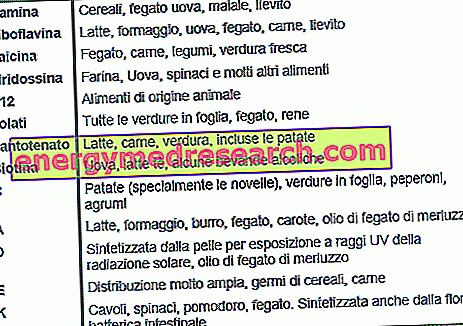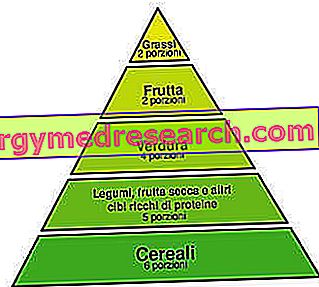ARE THERE VITAMIN RESERVES?
As we have seen, vitamins A, D, E and K are fat-soluble vitamins. Because of this characteristic they can be stored by the liver and adipose tissues. In the case of fat-soluble vitamins there are therefore real reserves to which the organism can draw in times of need.
As we have seen vitamins B1 (thiamine), B2 (riboflavin), B3 (niacin), B5 (pantothenic acid), B6 (pyridoxine), B12 (cobalamin) and C (ascorbic acid), folic acid and biotin are all water-soluble vitamins. This class of vitamins is easily absorbed by the body which is not able to accumulate them. Therefore in the case of water-soluble vitamins there are no real reserves and their intake with food must be almost constant.
EXCESS AND LACK OF VITAMINS
To be absorbed the fat-soluble vitamins need the presence of fats. It is no coincidence that the most significant sources of these substances are found in foods particularly rich in lipids such as oils, cheeses, sausages, etc. Consequently, it is logical to think that those who follow a low-fat diet may experience more or less marked vitamin deficiencies over time.
On the other hand, those who take large quantities of these substances, for example by resorting to an exaggerated dietary supplement, can go against real hypervitaminosis intoxication phenomena.
An unbalanced diet characterized by a reduced consumption of foods of vegetable origin can instead lead to a lack of water-soluble vitamins. In case of excessive intake there is no risk of toxicity as the vitamin surplus is easily eliminated with urine or sweat.
Finally, remember that with normal nutrition there is no risk of hyper or hypovitaminosis. The risk of hypervitaminosis is greater by using supplements while the risk of hypovitaminosis increases in case of malnutrition, in case of increased needs (for example during pregnancy and lactation) and in the case of unbalanced or deficient diets in particular foods (ketogenic and similar) ).
WHERE ARE THE VITAMINS?
In nature there is no food that contains all the vitamins. Some types of vitamins are found mainly in foods of vegetable origin such as vegetables , fruit, cereals and legumes. Other types are instead contained above all in foods of animal origin, such as meat, fish and cheese.

VITAMIN AND MINERAL CONTENT OF FOOD »
DIFFERENCES BETWEEN NATURAL AND BIOSYNTHETIC VITAMINS
If from the structural point of view there is no difference between natural and biosynthetic vitamins, there are different effects that can be obtained by taking one or the other. In fact, while the former interact with numerous other natural substances present in the food that contains them, the latter, being isolated, have a lower beneficial effect. What our body needs is not a single vitamin but a complete set of all nutrients.
INTEGRATION OF VITAMINS
It has not been clearly demonstrated that athletes have RDAs higher than sedentaries (group B and antioxidants: A, C, E, beta carotene). It is believed, in fact, that the possibly higher requirement is covered by the increased food intake.
Instead, they are at risk of developing hypovitaminosis subjects:
following extreme low-calorie or hypolipid diets
vegetarians (or exclusion of specific foods, unbalanced diet)
elderly athletes (difficult absorption of B12)
poor sun exposure (Vit. D)



